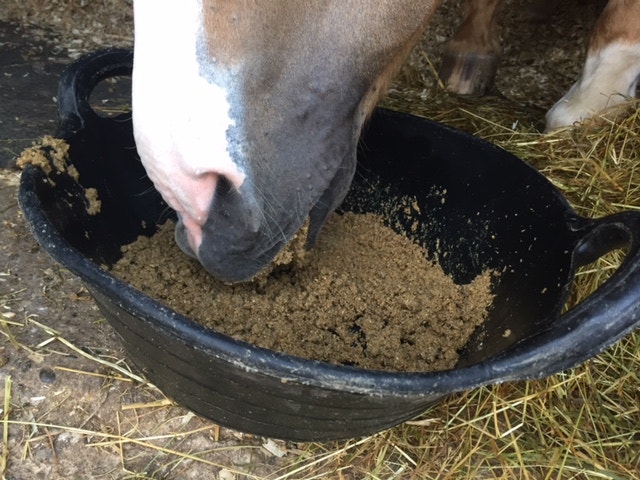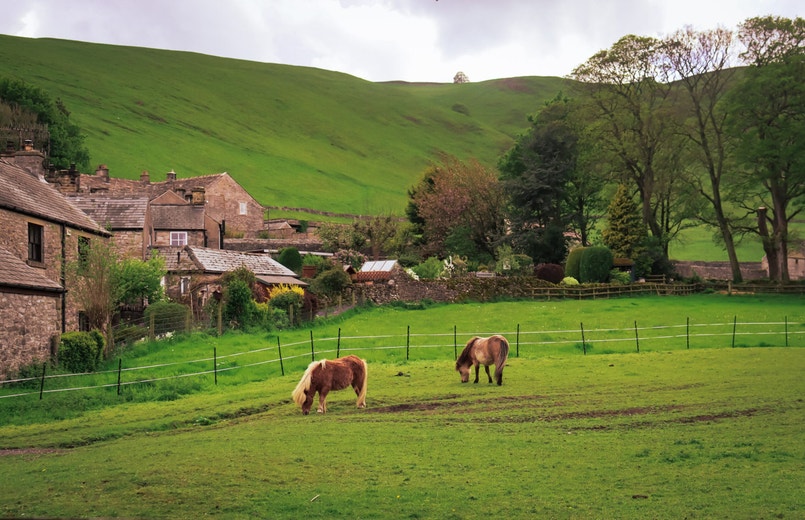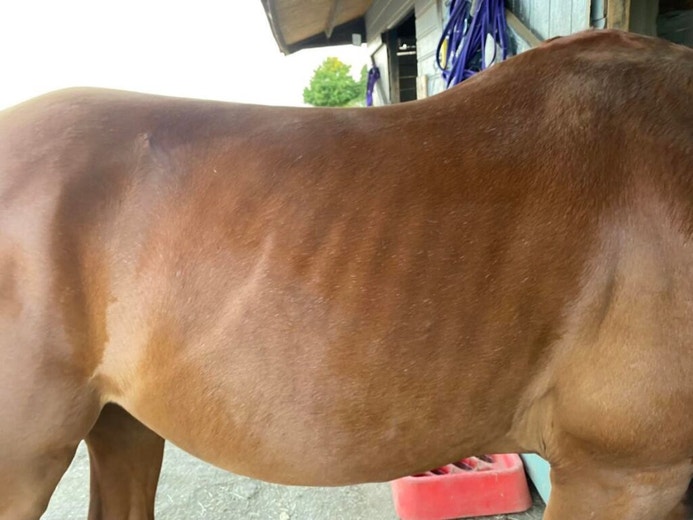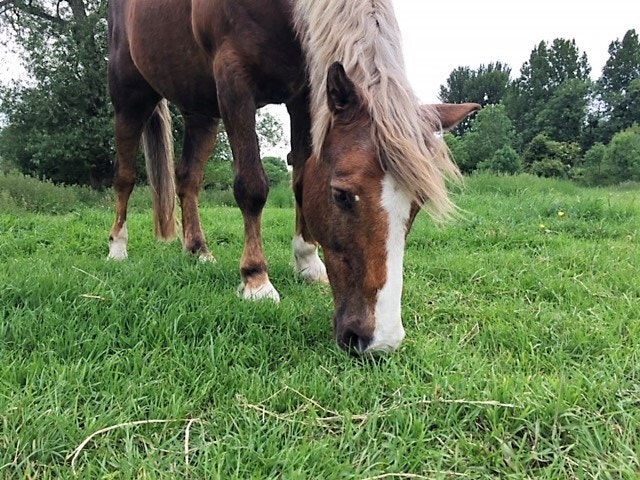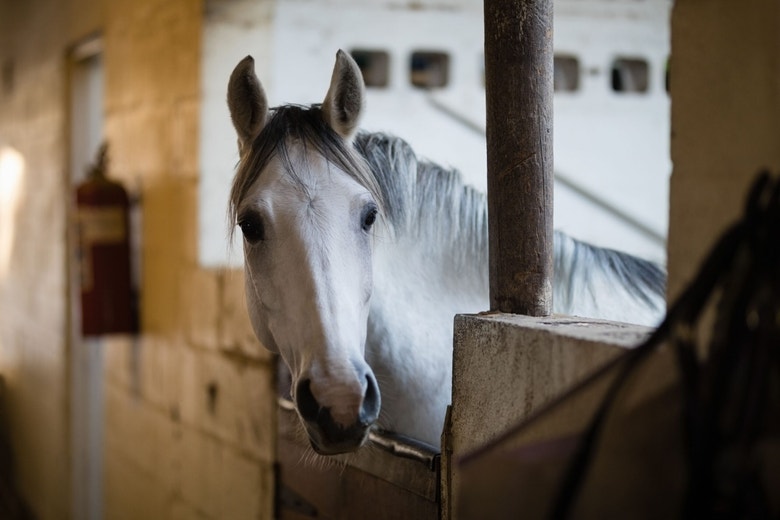Emmelia Potts Mongol Derby Q&A
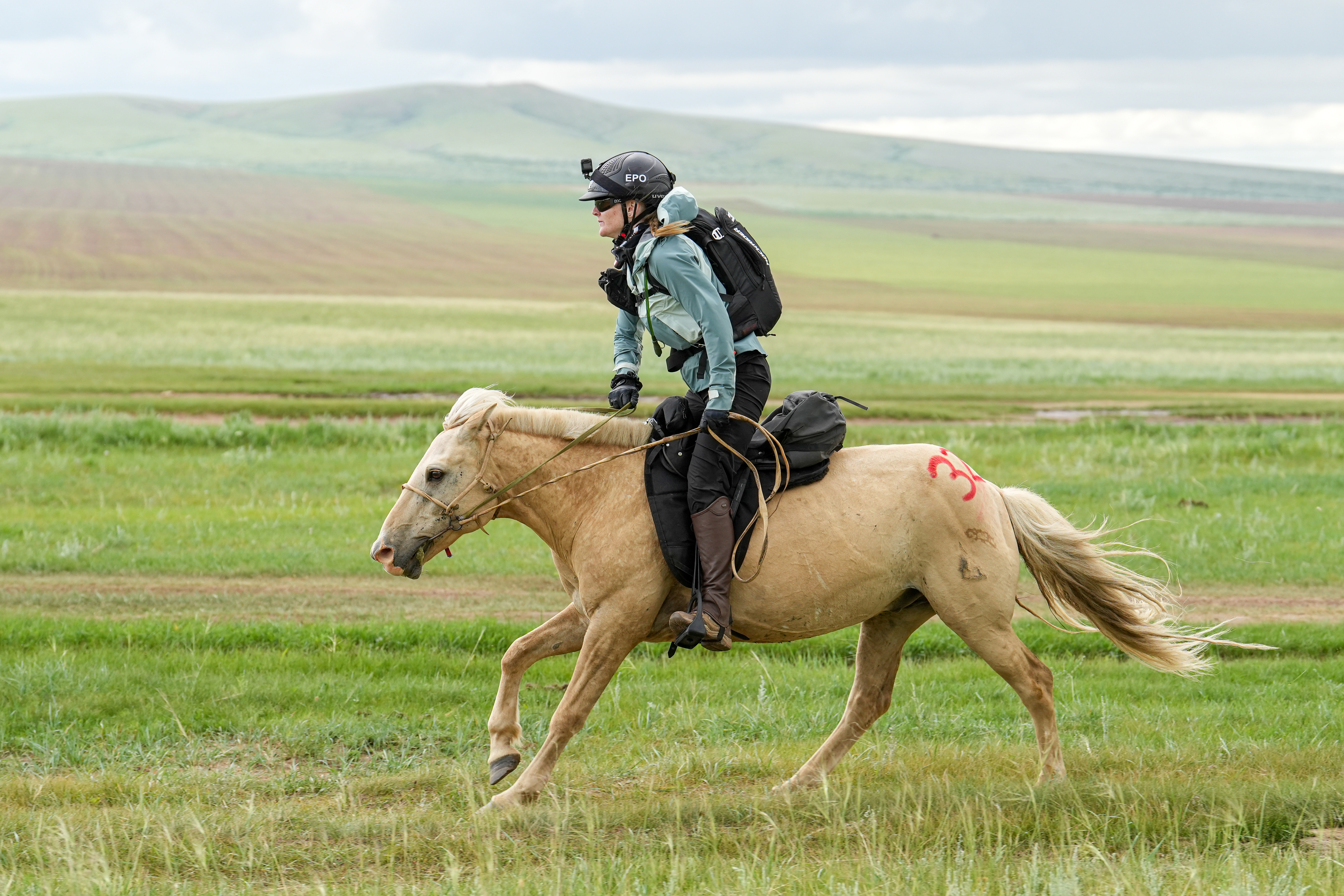
Emmelia Potts, Construction Project Manager with a bite for adventure sports and pushing herself a little too far. Started at 5ks and ended up representing the UK at the Obstacle Course Racing World Championships in Canada (epic fail), participating in ultra-marathons for fun (not such a fail) and giving Ironman triathlons a go. Riding has been a lifetime passion and hobby for Emmelia so the 2023 challenge was the Mongol Derby where a love for riding could be a part of the endurance challenges. Riding out for Karen Jewell Racing was the main source of training.
1. Can you describe the Mongol Derby and what inspired you to take on such a challenging race?
It's a 1000km horse race (you end up riding more towards 1300km) over 10 days across the wilderness of Mongolia. You ride 29 different semi-wild horses as you swap horse every 40km so they stay fresh whilst you wilt away as the days go by! Between horse swap stations you navigate by GPS as there is no marked route and you can only carry 5kg of kit for the duration of the race. The event was mentioned to me in passing by a chap called Paul McNicholl who worked at Linda Jewell Racing when I worked there ten years ago. I had just started progressing from Obstacle Course Racing to marathons and travelling around the UK for these. He said words to the effect of "You like doing ridiculous adventures have you ever heard of the Mongol Derby? That would be right up your street" I hadn't heard of it, so I did my research and Paul was right it looked amazing, and I started saving immediately.
2. The Mongol Derby is known as the world's longest and toughest horse race. How did your experiences as an ultra-marathon runner and Ironwoman prepare you for this unique event?
Thinking of the event in small chunks, rather than one massive event, is key. So instead of thinking I have a 2-mile swim 120-mile cycle and marathon to finish in an Iron Man you focus on the discipline you are on and "forget " the next stages. I used the same mentality in the derby so as not to become over faced. One horse stop and one day at a time until it's finished.
You also learn doing tough events the art of resilience and how when you want to give up you can keep ploughing on despite pain, hunger or exhaustion. You learn the human body is capable of amazing things even when your mind tries to talk you out of it. If I was having a bad day on the Derby I draw from previous tough times and remember that this pain shall pass and that it is worth the feeling of accomplishment at the end.
3. What were some of the biggest physical and mental challenges you faced during the Mongol Derby, and how did you overcome them?
Physical were my knees giving up on day 6 and my pain relief no longer doing its job. This was rectified with injections into my bottom every morning by the wonderful medics. Although these did stop working on the last day. Also dealing with dysentery and sickness bugs whilst riding was tough and not something I would ever wish on another human! I did not overcome these, I just dosed up on medication and carried on with my eyes on the finish line. Finish line meant rest and no more pain!
The main mental challenge is getting to the halfway point, being in agony, tired, hungry and knowing you have another 5 days to go. That was hard especially if you were drawing slow horses (it was the lottery system pilot in 2023). The fast, unpredictable horses took your mind off everything. Overcoming mental challenges was a bit easier as I am used to it from previous events. Something would go wrong or I would want to stop and I simply reminded myself of all the training and money it took to get to that point, how many people were supporting me and how lucky I was to even be in the race. On the penultimate day, I was really not well and my mental morale was bad. I relied on two fellow riders to get me through that day. That’s the thing about the Derby, the support for each other is incredible and if you are really in a hole, others will help you through that bad time.
4. The race covers roughly 1,000 kilometres across the Mongolian steppe. How did you approach the strategic aspect of the race, considering both navigation and horse management?
There was no strategy to begin with I was very much flying by the seat of my pants in blissful ignorance! I just wanted to finish and come away with no life-changing injuries so I did not think strategy was needed for those of us who were not interested in winning. However I was very wrong and after the first horse stop, I realised I had to think about what I was doing a bit more or I was not going to finish at all.
Rather than an overall game plan I just paused at each horse stop and planned my life for the next few hours. I would take 15 minutes to rest, eat, fill u on supplies, look at the map and plan a rough route. Horse management I would listen to the horses. If they were a bit wild, I was quiet with slow confident movements and did not faff around taking up and getting on. If they became tired… we slowed down, if they were hot…I would spray my drinking water on their necks, if their heads lowered… we stopped for water and snacks, if they were a bolter… I let them crack on! Adapting your presence and demeanour to each horse on this race was key and listening to their needs at every moment was crucial if you wanted to make it to the next stop and pass the vet checks.
5. Tell us about a particularly memorable or transformative moment you experienced during the Mongol Derby.
Sleeping in an open goat shed with a fellow rider, Martin, and our horses. We had the two most amazing Nadam racing horses that flew across one leg with us. However, we were running out of time rapidly to get to the horse stop (riders have to be off their horses by 7 p.m. each day for safety) so we had to find somewhere to camp for the night as we wouldn't make it and pass the vet check-in time. Martin signalled to an open-air goat shed in the distance near a small body of water. Shelter and water, bingo! Whilst grazing our horses the weather closed in and a massive lightning storm set in for the night. We were frantically running around trying to construct makeshift pens so the horses couldn't run off, laying planks of wood down on goat poo for us to sleep on and getting ourselves in our bivy bags before the rain became torrential. Doing this in the middle of nowhere, pitch black, lightning, biblical rain and gale force winds with two near-wild horses screaming into the storm was slightly terrifying and hilarious. I lay on the rotting, wobbly timber planks, with our two horses nickering behind me, water dripping onto my face through the roof, stomach growling with hunger and watched the most amazing lightning storm for most of the night. I remember being hugely humbled at how small and insignificant I was in relation to nature and how grateful for a leaky shelter I could be.
6. Balancing endurance and pacing is crucial in such a gruelling race. How did you manage your energy levels and avoid burnout throughout the event?
I ran on adrenaline for the first half of the race and the last day. The other 4 days were tough, no matter how much food you eat you are going to become malnourished and no matter how sleepy you are it's going to be broken and uncomfortable sleep. It was more about trying to look forward to moments than managing energy levels. I just accepted I was going to be exhausted. I would look forward to food, seeing other people and picking out an amazing horse. 90% of the time the fabulous horses kept me engaged with enjoyment and on my toes so the adrenaline was always pumping around then. Essentially you are constantly drained but there is always something going wrong, or something amazing happening that keeps you focused and energised until you flop at the finish. It took me a good 4 weeks to fully restore my lack of sleep after the race so I do not think you can avoid burnout especially if you camp out most of the nights.
7. Mongolia's terrain and weather can be quite unpredictable. How did you adapt to the changing conditions throughout the race?
We were really lucky. It was roasting hot 99% of the time so the focus was suncream and drinking plenty of water. I was caught out in one rainstorm whilst riding at the end of the day so I soldered on and then stripped down and put dry clothes on asap. Another day, another storm was coming over a mountain in the distance, on course to hit my path ahead, so I stopped to let my horse graze and watched the storm from a distance until it had passed. The rain storms are so bad in Mongolia that if you see one ahead you take the time to stop if it can be avoided. You also try to pre-empt the weather at each horse stop and dress accordingly before you draw your next horse, as once you are on the horses getting off to change clothes is a really bad idea. The horses are not a fan of faffing around and are simply not used to noisy clothing. Common sense prevails. With the changing terrain you simply get used to the stunning landscapes fluctuating around you and look forward to what is next! The alterations do not affect the horses, they are so used to hills, mountains, sand, bogs, and rivers and take any terrain in their stride. You quickly learn to trust these steeds footing like no other horses.
8. In ultra-endurance events, nutrition and hydration are key. How did you maintain your physical well-being during the race, especially considering the remote locations you were in?
I was told during my endurance training with "On the Hoof" to take the time at horse stops to refuel, do not rush off because it is a “race”. You also learn when running ultra marathons, that forcing food and drink down at regular intervals is key to keeping yourself going, even when you do not feel hungry or thirsty. If you feel hungry or thirsty it is probably too late. I learnt this the hard way a few years ago.
So, I bought a 3-litre water bladder and set an alarm for the first day riding every 20 minutes to drink water to get into the habit of drinking even when I did not think I needed to. The drinking bladder was finished and refilled on every leg of the race. At every horse stop (every 40k or so) I would force down food and electrolytes. Burnout is inevitable and I did eventually get tired on day 6 but I think the tip of forcing down calories and water is invaluable and ultimately kept me going. The food on offer at horse stations was mostly local cuisine of sheep insides, horse and goat meat, noodles and broths so you were never far away from food, you were never going to starve to death. However, being sensible about what you ate at the horse stops was also key. I got carried away on the penultimate night and ate boiled sheep organs with a family whilst camping and suffered the next day! I also had a few protein bars and sugar snacks in my 5kg weight allowance for a treat when I needed a pick-me-up.
9. Mental resilience is a cornerstone of both ultra-marathons and Ironman competitions. How did you stay focused and motivated during the long stretches of the Mongol Derby?
It was easy when the horses were fast as the time flew and it was SO much fun. However, if you had a slow horse, it was tough. When I had slow horses some legs took 4 plus hours, I would look up, take a deep breath in and remind myself of where I was and how lucky I was to be in the middle of Mongolia. This shifted my mindset to start looking at the positives. The majority of any endurance game (unless you get injured of course!) is mental and just telling yourself to keep going. For example, halfway through a 40k leg, my riding buddy was drifting in and out of sleep and not drinking enough due to pain and fatigue she was not good and I was terrified. I was trying to keep her going, whilst navigating, in blistering heat not feeling 100% myself. At that moment I could have called into HQ that she needed picking up in a van and sacked it all in. Instead, I took a deep breath and reminded myself of where I was, how amazing the country and landscapes were and how lucky I was to have this experience. Yes, this particular moment in time was rubbish but that meant it couldn't get too much worse! We trundled on, and at the end of the day flaked, laughed at how awful it had been and offloaded the mental baggage to start fresh the next day. The more you push past an unpleasant time and then realise how glad you are that you did the easier it becomes to repeat in the future. By the time the Derby came around, I was well-versed in overcoming problems at various past events and had a well-tuned mentality of just getting on with the task at hand when things were going wrong. I would advise anyone wanting to do the Derby to try other non-equine endurance events beforehand and to push themselves to see what their limits are and how they push through physical and mental blocks.
Also riding and raising money for RoR and Alzheimer’s Society charities helped to spur me on when I was struggling. I had never raised money for charities for an event before but it helped as there was a higher reason as to why I had to finish.
10. Were there any unexpected or surprising moments that occurred during the race, and how did you respond to them?
Most things that happened in the race were not unexpected as the one guaranteed thing doing the Derby is that anything that can go wrong will. The organisers are quite clear about being chased by dogs, being homeless for the night, falling off, being kicked, losing your kit, being sick, hunger and tiredness, fainting from heat, shivering from cold, biblical weather storms…very little is a surprise. However, whilst I was expecting to fall off a lot one fall caught me off guard, mainly because I was having such a lovely time on the most chilled horse. A fellow rider and I were gleefully galloping out of a horse stop on two gorgeous stocky, chilled, bay powerhouses, loving life, laughing and cheering about how we were “doing the Derby” and then my horse suddenly disappeared down a cavernous marmot hole, sending me and the horse flying. This was the first marmot hole that had caught me out. Usually, Mongolian horses are used to these obstacles. They sort their legs out and just trip and stumble through or over the holes, even when their noses touch the floor. However, this hole was rather large and no matter how many times “heels down” has been screamed at me in my life, it would not have worked. The horse disappeared from underneath me, my face collided with the floor, the horse rolled on my legs and I lay on the floor thinking “what on Earth happened there then!?”
I jumped up, got the horse out of the hole, checked he was okay, checked everything on me was moving, whinged about my broken helmet, laughed and got back on. I've never been a horse rider that takes themselves seriously and I tend to just laugh things off and crack on. That was adopted here and indeed through most of the race. You really cannot have a sense of humour failure with endurance events, if you don't laugh you will cry.
11. Can you share some insights into the bond that forms between riders and their horses during the Mongol Derby? How did you manage to establish a connection with the horses you rode?
The rapport you form with these hoses in such short time frames is phenomenal and is due to the obstacles you encounter and overcome together. You really do start to trust these horses with your life, after all, they know this country better than you. To try and establish connections I began by watching the local herders in the training camp and tried to mimic their riding techniques. Standing out of the saddles, leaning forwards to use body weight to steer at speed, trying to stay totally off the reins, being quiet and not fussing around the horses both when mounted or on the ground. Westerners smell, look and move differently from what these horses are used to, you are terrifying. Therefore, trying to make the horses comfortable with me was key to establishing a connection with these flight animals.
Once mounted it was very much treating them as any horse should be treated, with respect and kindness.
Sure, some horses were easier to ride than others. The trickier ones I found to be difficult because they just wanted to get on with their job and gallop off. Therefore, to mitigate that being an issue I would mount with the horse pointing in the right direction so once I was mounted we could just take off straight away. The horse was happy I was letting him go forward and I was happy because the horse was not trying to deck me. It sets you both off on the right hoof with each other rather than arguing straight out of the horse station.
12. How did completing the Mongol Derby compare to your other achievements as an ultra-marathon runner and Ironwoman? Did it present unique rewards or challenges?
The Derby was much harder overall because it is 10 days, not 2 days. 2 days is the longest ultra marathon I have competed in. The thing (aside from duration) that makes the Derby harder than other endurance events is the sheer number of variables. The individual challenges encountered in the Derby are tough but not nothing too extreme. Riding horses, navigating, language barriers, deadlines, bad weather, camping, being hungry and tired are all things that are quite manageable one at a time. Where this event shines is the combination of the challenges at once and the longevity that you have to encounter them for. You can prep and plan for these variables and for when things go wrong but until you are in the thick of the race, with all the worst-case scenarios hitting you at the same time, you cannot appreciate just how intense this event is.
The unique, stand-out challenge of this event compared to an ultra marathon or tri was the horses. Running and triathlon events have no animals, this means a lot less can go wrong as you are eliminating the anomaly of another living creature with its own mind contributing to your outcome. Sure, bikes can get punctured but they can't suddenly decide that a bush is scary and run 5km in the wrong direction. You can learn to ride horses, but you really cannot plan for how another living creature is feeling. To further exacerbate this, you can also not account for how your skill set of riding will be affected by all the variables taking their toll for 5+ days. It affects your riding which in turn affects the horses even more and adds to their unpredictability.
Due to this finishing this event felt far superior to anything I had ever finished before.
13. What advice would you give to aspiring endurance athletes who are considering taking on extraordinary challenges like the Mongol Derby?
For the Derby:
- Do not hesitate, do it! It is amazing and has changed my life.
- The best training advice I can give for the Derby is to get to a racehorse stable and ride as many personalities as you can. Strong tough national hunt horses, flighty fresh flat horses, unpredictable youngsters that will bolt with you and have no steering. Ride them all. This was the majority of my training at Karen Jewell Racing and it helped me be unphased by just jumping on anything in Mongolia. You really learn the art of letting the horses get on with what they want to do and trusting them. You also get used to being run away with so your first bolter in Mongolia won’t seem so scary! Ride as many youngsters as possible too so you become familiar with horses that are not push button or trained.
- Test your kit! I cannot stress enough how much you rely on your kit, especially trousers and waterproofs. Test them out.
- Prepare for the worst as things will go wrong at some point.
- Just to keep moving forward.
- Keep drinking water even if you aren't thirsty.
- Cable ties and duct tape are required.
- Do not leave your sense of humour at home!
Endurance events advice:
- Start small and build up with your goals.
- Nothing is ever built from a bad foundation all you will do is become injured when you start to try and progress. Build a solid foundation and do not rush training or progress.
- Focus on hours spent training in the discipline ie if you are running a marathon, nothing will substitute running practice and hours. Riding, spend hours riding. Sure there are transferable skills but nothing is better than actually doing the sport you are training for.
- Train in the gym for muscular endurance, not strength.
- Mobility and prehab exercises for any endurance sport are so important, do not skip!
- Sports massages I swear by once a month minimum if I am training for an event. They not only fix aches and pains but a good therapist should be able to tell you if they think any weaknesses might need working on.
- Get a tailored plan from a fitness professional if you are unsure of where to start or are a beginner. Despite the influencers on Instagram telling the world otherwise, one fitness and nutrition plan will not necessarily work for everyone. Health and fitness is not a one-size-fits-all and everyone needs to train at different paces to their own needs, goals and capabilities. If in doubt ask for help.
14. Reflecting on your journey how has completing the Mongol Derby influenced your perspective on your capabilities and the potential of the human spirit?
It has reaffirmed just how much I have developed as a human from when I started running my 5k races as an experimental hobby over 10 years ago. I used to wilt away at something not going as expected on a 5km race, now I laugh and make a new plan when I am life-threateningly stuck on a 1300km horse race. A lot of this is age and maturity but some is down to previous tricky events, exposing myself to physically and mentally hard challenges and just learning to be uncomfortable. Doing any endurance event or sporting adventures you learn that there are solutions for most things and you can work through a problem and find a resolve to make a new plan.
The human spirit in the race was incredible and the Derby has shown me just how unbreakable humans can be. It really restored my faith in humanity. People would cheer each other on, even when they felt horrendous themselves, they would sacrifice kit to others in need when they had limited supplies themselves and they would look at each other's genitals with accompanying “let us get you a medic”. Very few things were beyond asking each other for and most of the time morale was high even when we all felt like death. Seeing how humans club together in adversity was heartwarming.
15. What's next for you after conquering the Mongol Derby? Are there any new goals or adventures on the horizon?
Mountains, Marathon De Sables, swimming the channel and a plethora of more Ultra Marathons! I am always looking for sporting adventures so I am open to all suggestions!
Photo credit: Kathy Gabriel and Shari Lee Thompson.

